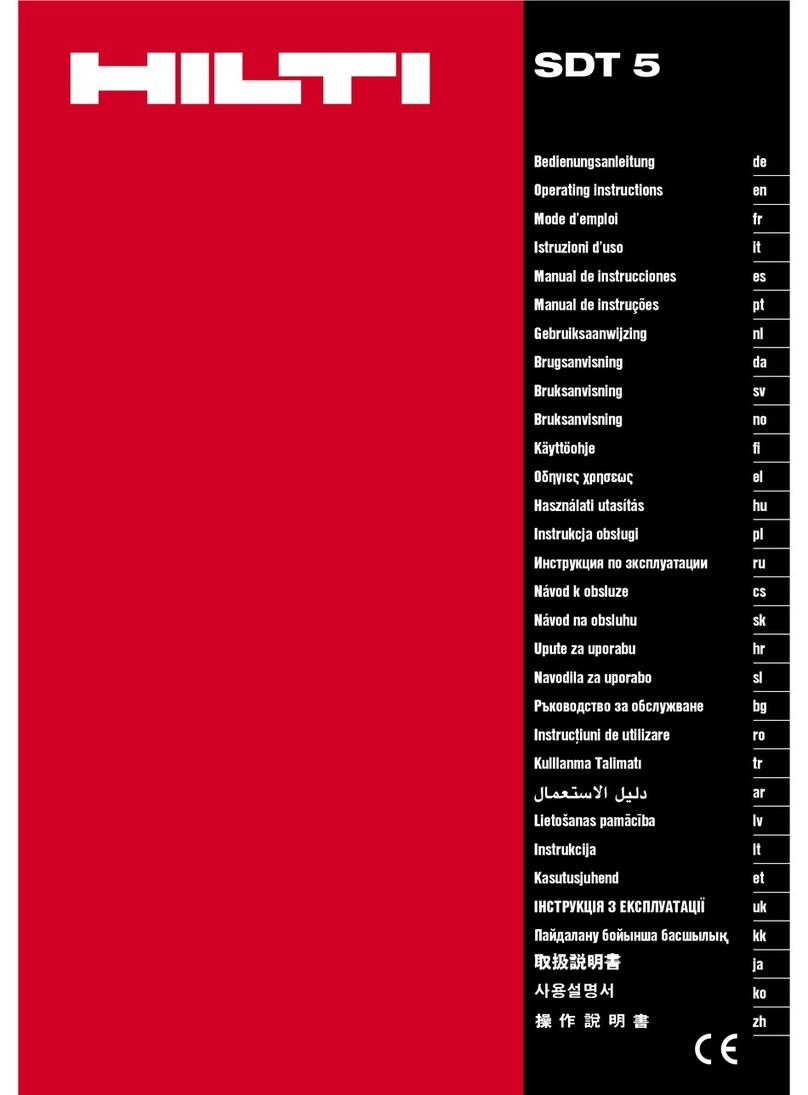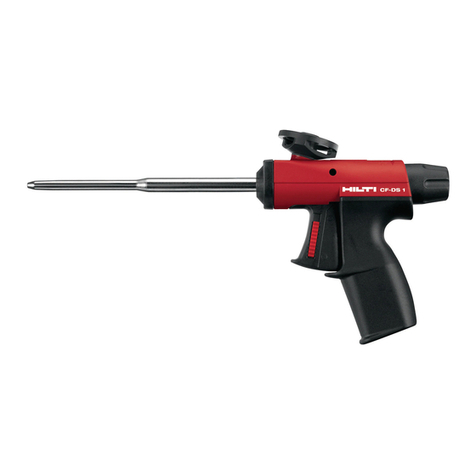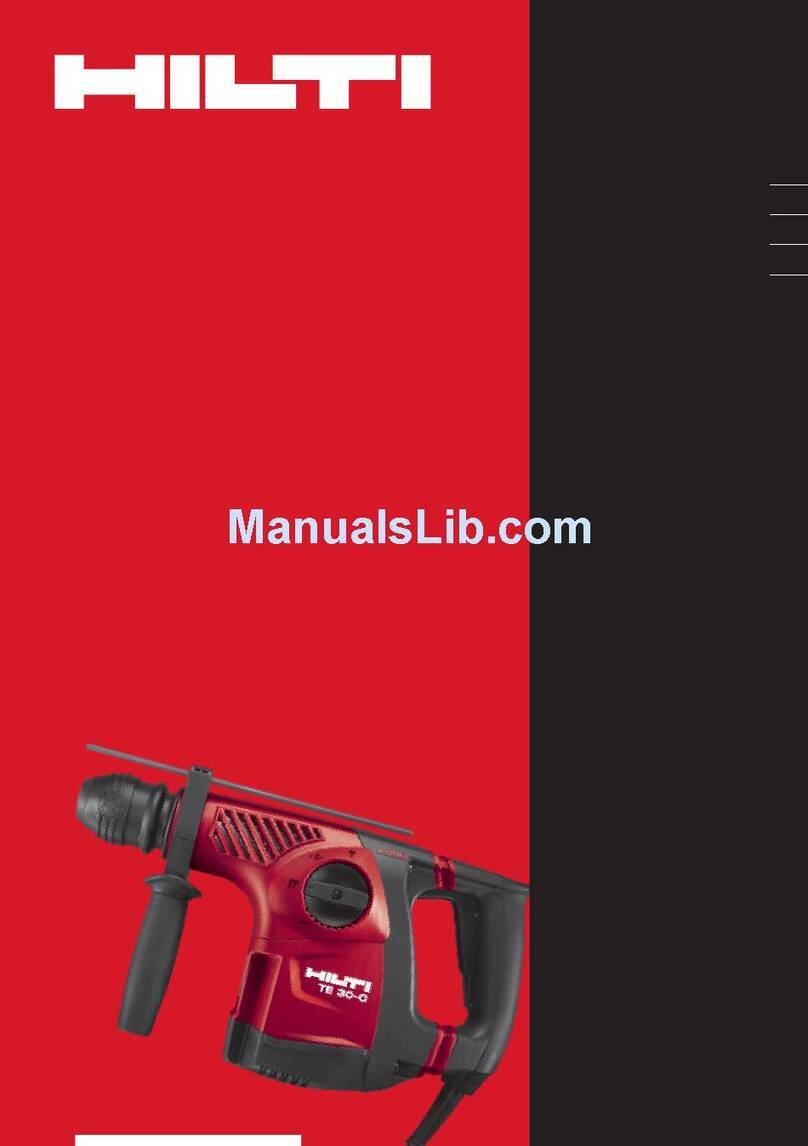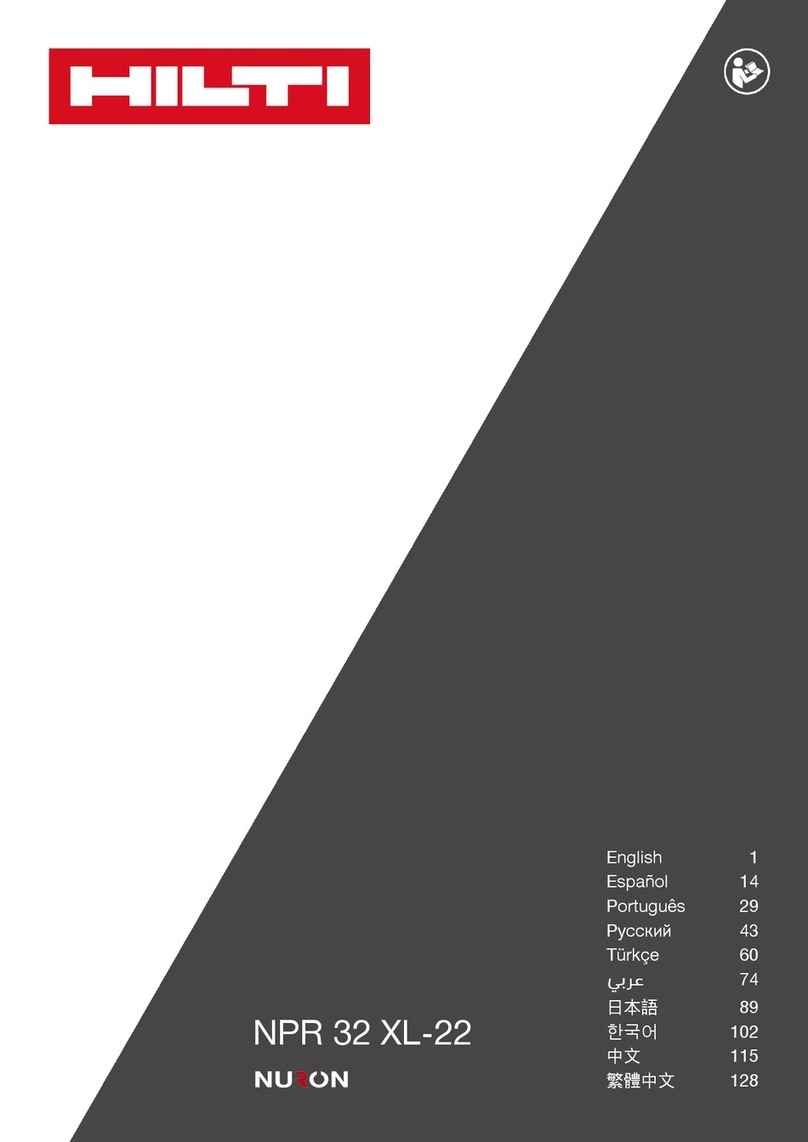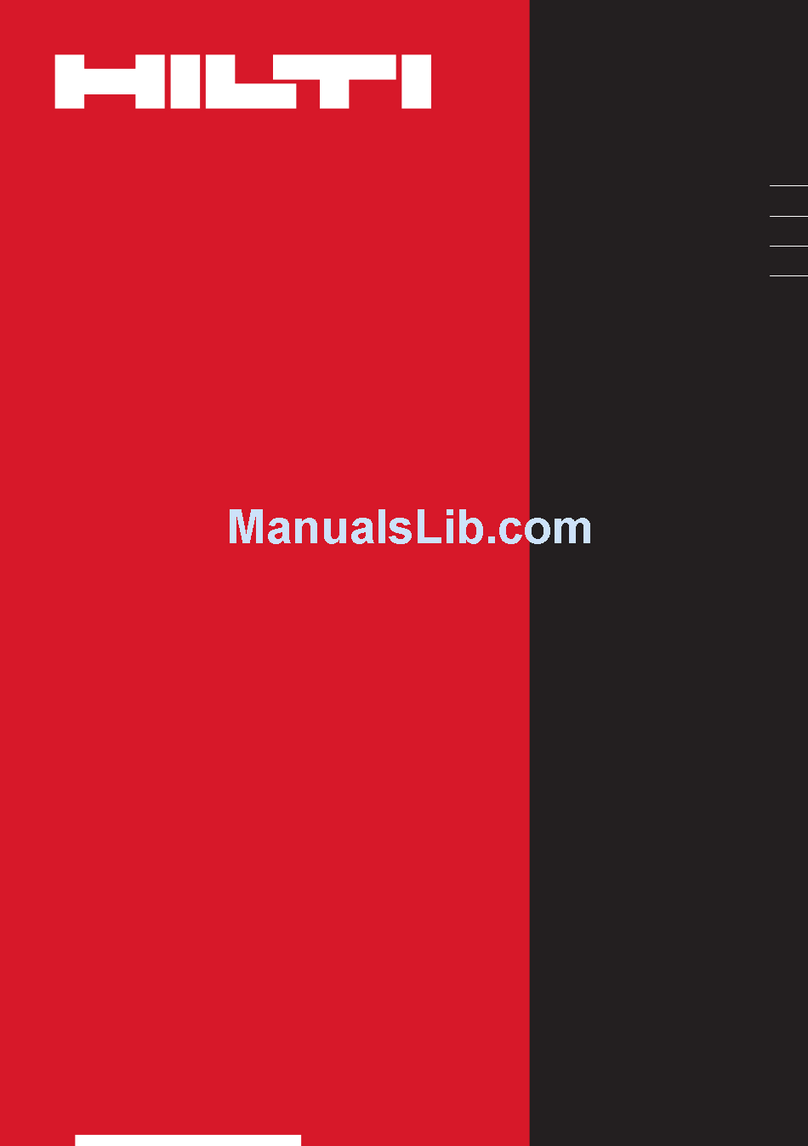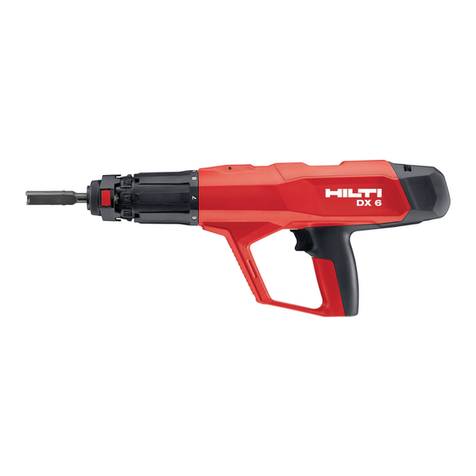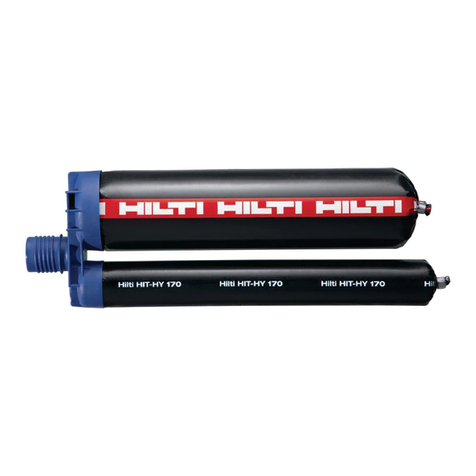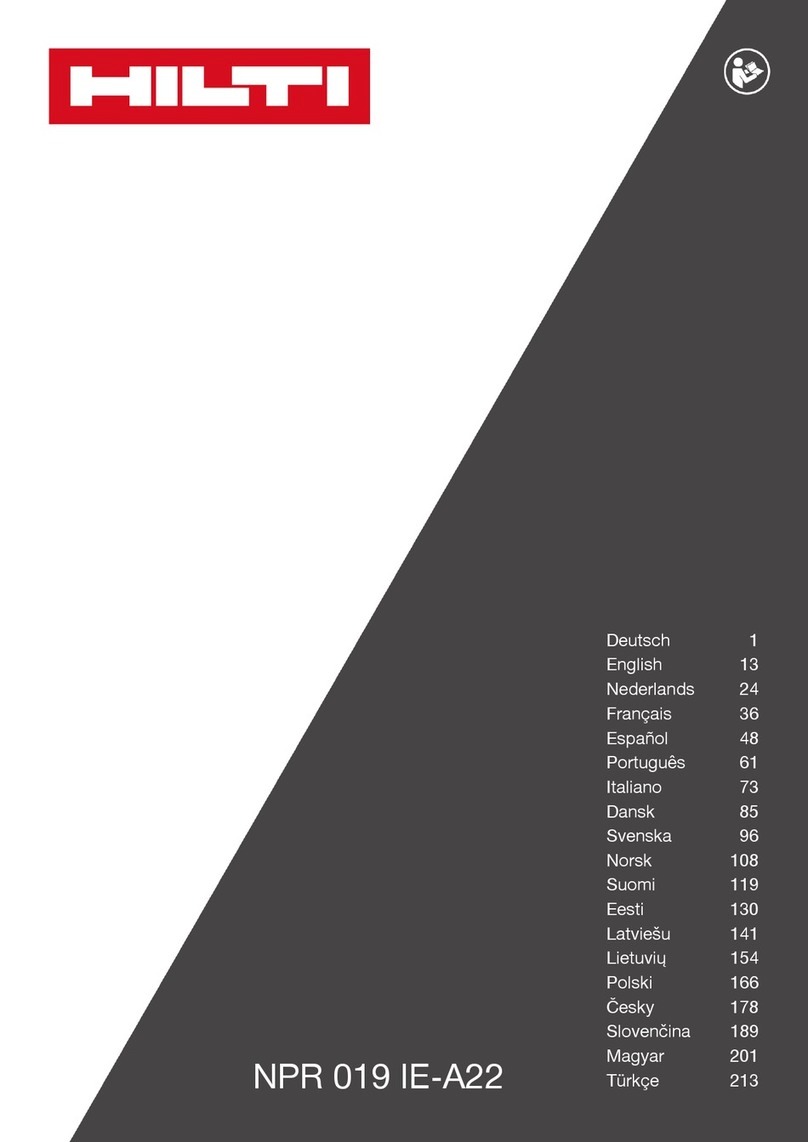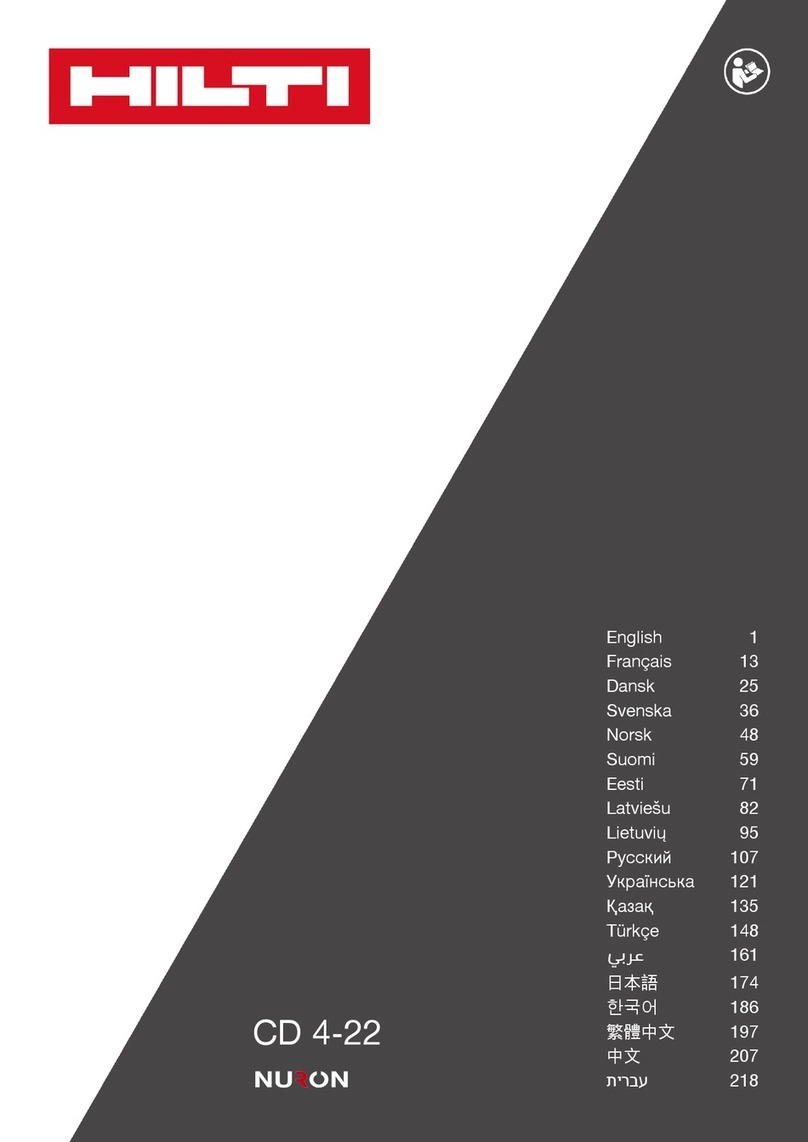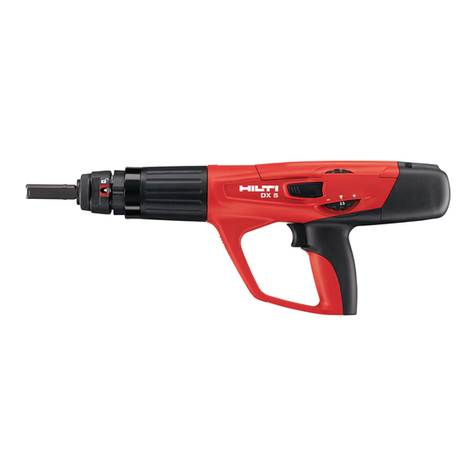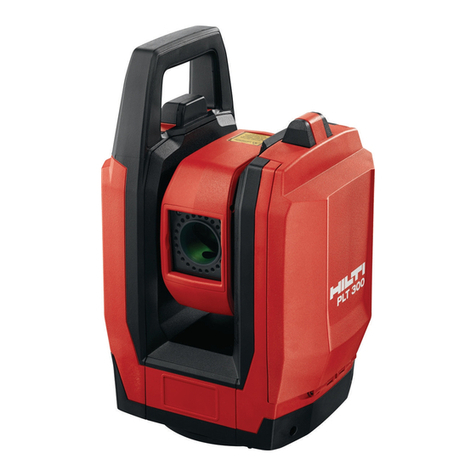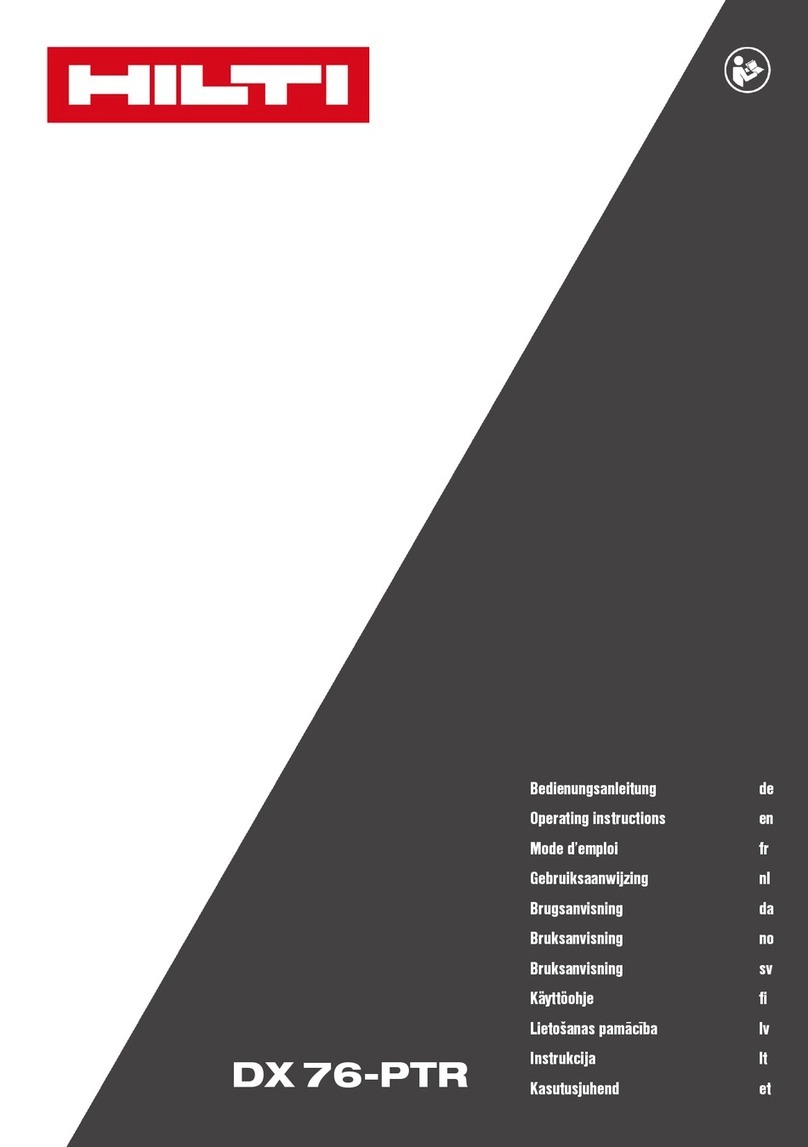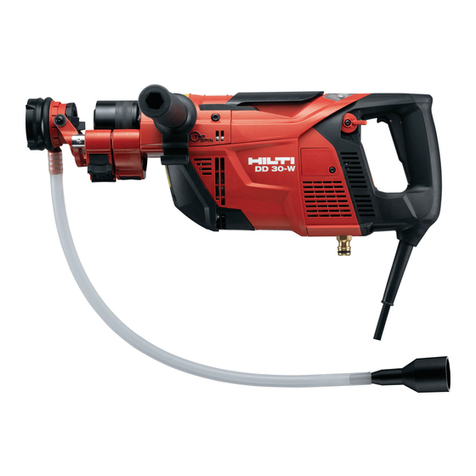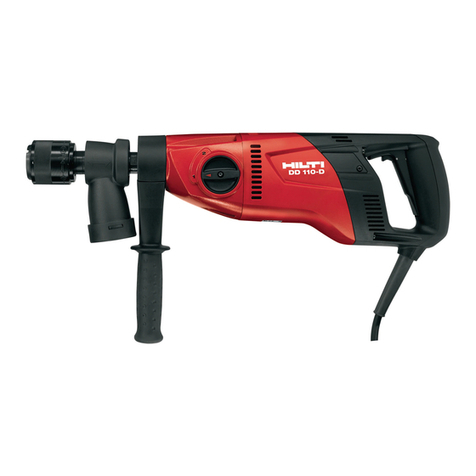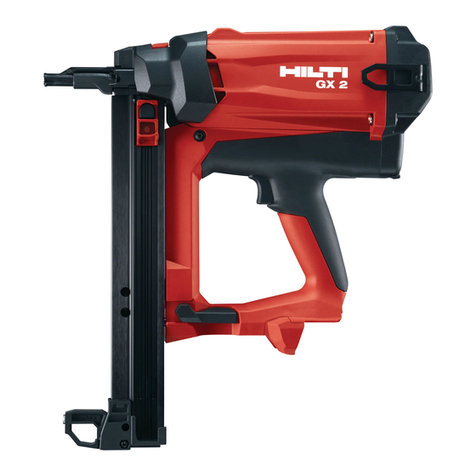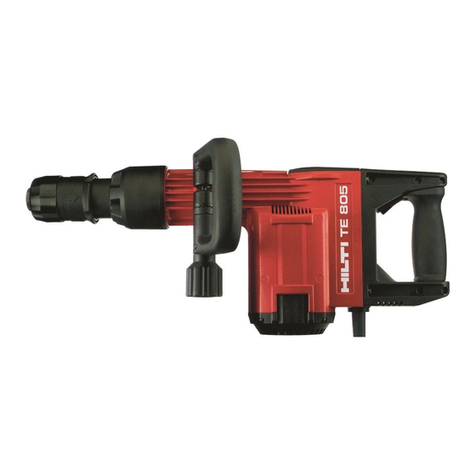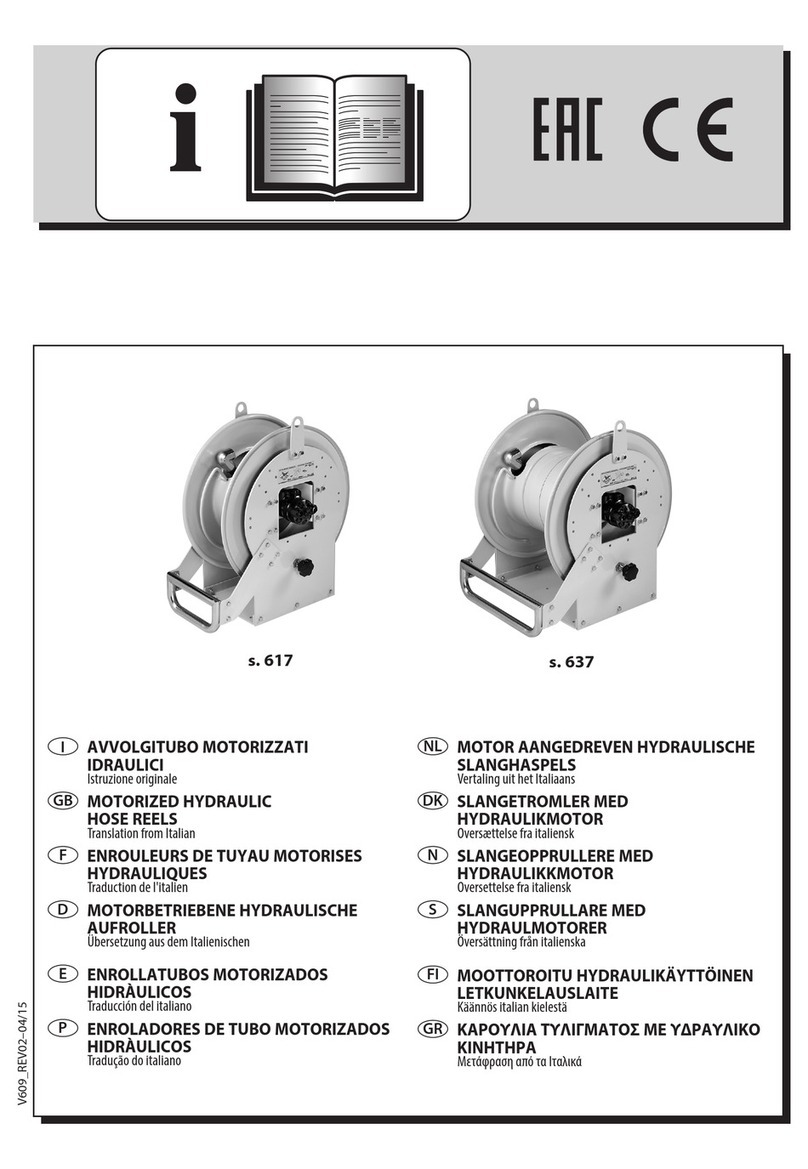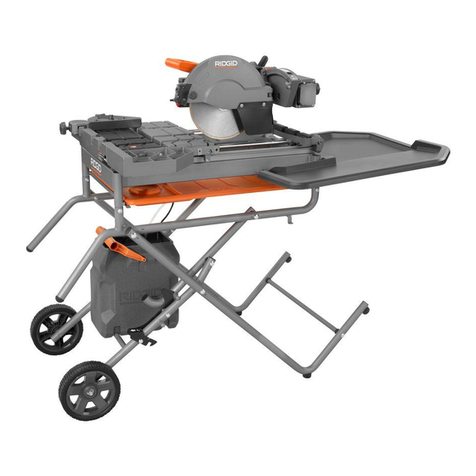
Symbols
Read the
operating
instructions
before use.
Return waste
material for
recycling.
National
waste
material
recycling
system
“Off” position Continuous
dispensing
Measured
dispensing
Location of identification data on the tool
The type designation and serial number can be found
on the type identification plate on the appliance. Make
a note of this data in your operating instructions and
always refer to it when making an enquiry to your Hilti
representative or service department.
Type:
Generation: 01
Serial no.:
2 Description
2.1 Use of the product as directed
The tool is designed to dispense the contents of Hilti foil packs in a controlled operation. The HDE 500‑A18 cordless
dispenser is designed to be used exclusively to dispense the contents of Hilti 330 ml (11.1 fl.oz.) or 500 ml (16.9 fl.oz.)
foil packs. Use of third-party products with the tool is not permissible.
Depending on the type of foil pack, the tool can be used with either a black or a red foil pack holder (see fig. 2).
Black foil pack holder: Used to dispense Hilti mortars supplied in black or white foil packs.
Red foil pack holder: Used to dispense Hilti mortars supplied in red foil packs.
The appliance is designed for professionaluseandmaybeoperated,serviced and maintained only by trained,
authorized personnel. This personnel must be informed of any special hazards that may be encountered. The
appliance and its ancillary equipment may present hazards when used incorrectly by untrained personnel or when
used not as directed.
Never point the tool toward yourself or other persons.
Do not use the battery as a power source for other unspecified appliances.
Modification of the appliance or tampering with its parts is not permissible.
To avoid the risk of injury, use only genuine Hilti tools and accessories.
Observe the information printed in the operating instructions concerning operation, care and maintenance.
The working environment may be as follows: construction site, workshop, renovation, conversion or new construction.
Nationally applicable industrial safety regulations must be observed.
2.2 Items supplied
1 The appliance
1 Protective glasses
1 Hilti toolbox or cardboard box
1 Operating instructions
1 Foil pack holder, black (optional)
1 Foil pack holder, red (optional)
2.3 Additional items required for operating the tool
B 18/3.3 Li-Ion, B 18/2.6 Li-Ion or B 18/1.6 Li‑Ion battery and C4⁄36‑90, C4⁄36‑350, C 4/36 or C 4/36‑ACS charger.
2.4 Li-ion battery charge status and overheating indicator
LEDs light constantly LEDs blink Charge status C
LED 1,2,3,4 -C≧75%
LED 1,2,3 -50 % ≦ C < 75 %
en
2
Printed: 07.07.2013 | Doc-Nr: PUB / 5142533 / 000 / 00
